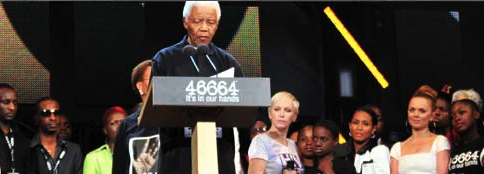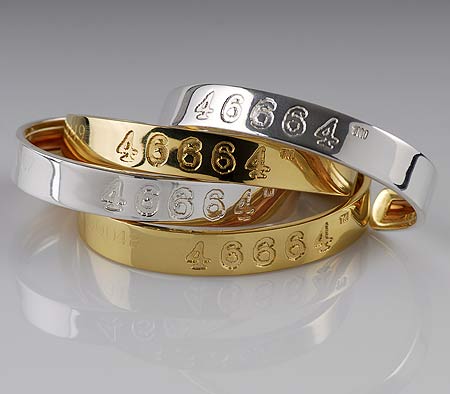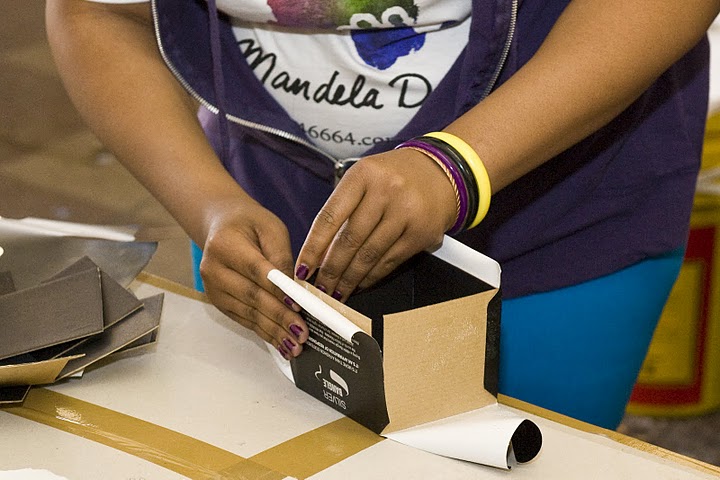Bling is once again in the news. Blood diamonds, of course, and the stories are all the more sensational for featuring a supermodel and one of the world's most heinous leaders.
It's hard to know how to understand what has been going through the mind of supermodel Naomi Campbell from listening to her testimony on the stand at the war crimes trial of former President Charles Taylor of Liberia.
On one hand Campbell admitted under some duress that in the middle of the night after a 1997 charity dinner in South Africa hosted by then President Nelson Mandela she had received a pouch of "dirty-looking stones" from two men at the door to her bedroom. See video from her testimony here
And Campbell said on the stand yesterday that the morning after she was given the pouch of uncut diamonds, she passed them on to Jeremy Ratcliffe, the then-chief executive of the Nelson Mandela Children's Fund, to "do something good with." (In a statement today, Ratcliffe confirmed that he had kept the three diamonds for the past 13 years, only turning them over to police on Thursday.)
But any claim Campbell might have had to the high moral ground at the UN-backed Special Court for Sierra Leone was undermined when she complained that testifying was "a big inconvenience for me," and that anyway she had "never heard of" the country of Liberia at the time she met Charles Taylor and had no idea who he was.
Taylor, a notorious warlord and guerilla leader, is being charged by prosecutors with receiving illegally mined "blood diamonds" from Sierra Leone while he was president of Liberia in return for helping to send weapons to the Revolutionary United Front. The RUF, the Sierra Leone rebel army, terrorized civilians during the civil war in that country--committing such atrocities as chopping off the arms, legs and noses of children and adults, and carving initials into people's bodies.
Stories, such as Edward J. Epstein's 1982 piece in The Atlantic "Have you ever tried to sell a diamond?" that is now re-circulating online and "Blood Diamonds" that appeared in 2001 in Amnesty International's magazine, have long exposed the brutality of the diamond trade.
But for those who love fine jewelry there is good news. There IS such a thing as "good" jewelry that comes out of Africa--or in other words, jewelry that does "good" for people. 
Consider one example from South Africa: the 46664 Bangle initiative that aims to counter the two most pressing socio-political problems of the country: the HIV/AIDS crisis and the rampant unemployment that in some cities is over 70 percent. (In visiting South Africa last month, I was told by senior officers at Rhodes University in Grahamstown, for instance, that unemployment in that city--home to arguably the best university in sub-Saharan Africa--is around 72-73 percent.)
 The 46664 initiative sells copper, silver, gold and platinum bracelets, all from metals mined in South Africa. It is named after Nelson Mandela's Robben Island prison number: 46664; a number derived from the fact that he was the 466 prisoner detained on the island in 1964.
The 46664 initiative sells copper, silver, gold and platinum bracelets, all from metals mined in South Africa. It is named after Nelson Mandela's Robben Island prison number: 46664; a number derived from the fact that he was the 466 prisoner detained on the island in 1964.
Sixty-eight percent of the proceeds from all the bracelet sales go to the 46664 charity, but the sales of the bangles, as they are called in Africa, is just one part of the initiative. The other is putting people to work and teaching them skills. The bangles are made in seven micro factories across the country which have hired "106 people off the street," Robert Coutts, CEO of Coutts Inc., the company that manufactures the bangles for the charity told me.
 The skills that are being taught are not only metalworking, but the making of the boxes in which the bangles are sold. Fifty formerly jobless mothers make the boxes by hand, at significant cost--about $5 US dollars per box rather than the 90 cents it would take to manufacture the boxes by machine in China.
The skills that are being taught are not only metalworking, but the making of the boxes in which the bangles are sold. Fifty formerly jobless mothers make the boxes by hand, at significant cost--about $5 US dollars per box rather than the 90 cents it would take to manufacture the boxes by machine in China.
To forestall counterfeit bracelets being sold, each bangle is either stamped (the copper ones) or engraved (the silver, gold and platinum ones) with an individual serial number that allows buyers to authenticate and register their bangles online, as well as transfer ownership. (I've registered my own silver bracelet online, and noted that to further prevent fraud one has to record not only the serial number but the place one purchased the bangle. What's more, the registration won't go through if the serial number doesn't match the list of numbers recorded for that sales location.)
On the stand at The Hague, Naomi Campbell appeared rather pathetic, ignorant of the worst of what has happened in Africa, and little interested in trying to establish the truth for the world to know.
Would that she were instead more like some of the out-spoken wearers of the 46664 bracelet--Angela Bassett, Alfre Woodard, Laurence Fishburne, Clint Eastwood, Oprah Winfrey, Will Smith, Bill Clinton, Elton John and Danny K--who recognize that objects, whether blood diamonds or charity bracelets, are aesthetically powerful communicators of history, knowledge, identity and values.